Just months after Fox Suspension announced its new fork, the 38, RockShox has unveiled its latest big hitter, the ZEB.
Like Fox’s 38, the new ZEB fork sports 38mm upper tubes and is aimed at enduro riders and racers.
But, if you compare the top-tier RockShox ZEB and Fox 38 models, the RockShox offering is cheaper and, according to claimed weights, lighter too.
Five things you need to know about the 2021 RockShox ZEB fork
- The new ZEB uses 38mm upper tubes/stanchions
- It’s offered in 650b or 29in variations and travel ranges from 160 to 190mm
- The Ultimate and Select+ models both use the Charger 2.1 damper, as found in the most recent Lyrik fork, though it’s built to work in a 38mm chassis on the ZEB
- There’s a choice of two offsets in 650b (38mm or 44mm) or just the one in 29in (44mm)
- RockShox is touting the cheapest ZEB model as ideal for eMTB, and even offers it with a Dual Position Air spring
- Best mountain bike suspension forks
- RockShox suspension fork buyer's guide
- Fox fork buyer's guide
- Mountain bike suspension setup: video guides to help you get the most from your bike
Many internet pundits had been speculating about the introduction of a new fork designed to go toe-to-toe with the Fox 38 ever since shots were spotted on social media, and while they weren’t wrong, no one could have predicted its name.
Most assumed RockShox would simply breathe new life into its old long-travel, single crown fork, the Totem – a fork with some impressive credentials that generally did well when we reviewed it – but, sadly, it didn’t quite pan out that way for RockShox who didn’t copyright the Totem name in time.
As a result, the ZEB fork was born. The fork gets its name, as does its Pike fork, from Lieutenant Zebulon Pike – the American explorer Pikes Peak is named after, which happens to sit above the RockShox global design centre in Colorado Springs – just in case you wondered.
2021 RockShox ZEB has an all-new 38mm chassis
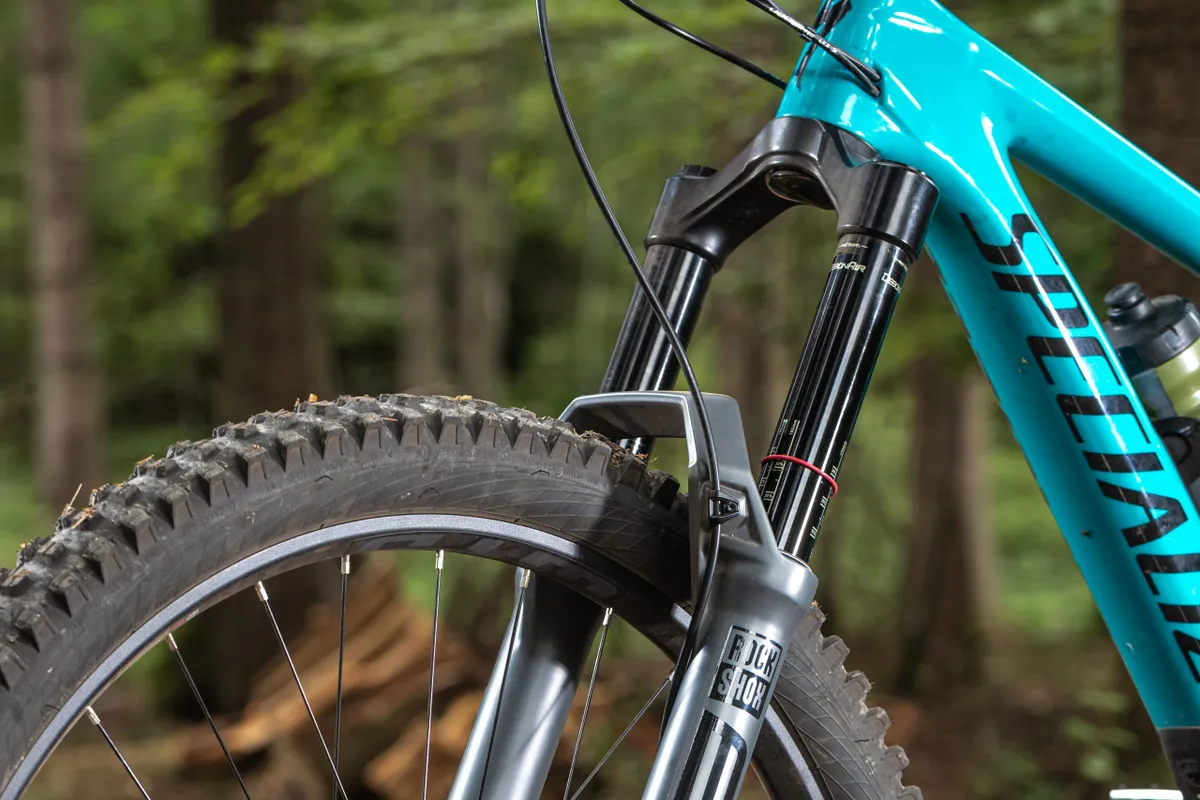
Visually, the new ZEB fork is notably burlier than the skinnier tubed Lyrik, and sports chiselled lines much like that of its skinnier cross-country counterpart, the SID.
Just like the SID, the ZEB gets a forged and CNC-machined crown with an intricately angular crown, which is designed to deliver stiffness without weighing the fork down unnecessarily.
But one of the key talking points here has to be the 38mm upper tubes, often referred to as the stanchions.
While the old Totem actually sported whopping 40mm uppers, RockShox decided to settle on 38mm for the new fork. This is a measurement that sits between the old single crown big hitter and the brand’s fully-fledged downhill fork, the Boxxer, which uses 35mm straight-wall stanchions.
And, as it happens, they happen to be same diameter as the stanchions used on the new Fox 38 enduro fork.
Increasing stiffness
Naturally, moving to a wider diameter stanchion will generally mean an increase in stiffness. RockShox claims this boost in sensitivity and steering precision allows riders to push harder.
But wasn’t the Lyrik and its 35mm stanchions enough for even the best in the world? Well, yes, potentially, especially if you weighed around 70kg or less. Heavier riders will have certainly felt it flex from time to time, though.
Multiple downhill World Champion and former Enduro World Series winner Nico Vouilloz recently told Pinkbike how comfortable the Lyrik feels on prolonged descents but that, even at his weight (70kg), they could be stiffer.
The danger of going too stiff, as many downhill racers found with early iterations of Fox’s dual-crown 40 fork, was that it transmitted too much feedback through the bars into the rider’s hands, and its lack of compliance meant it needed some wrestling to keep on the right line.
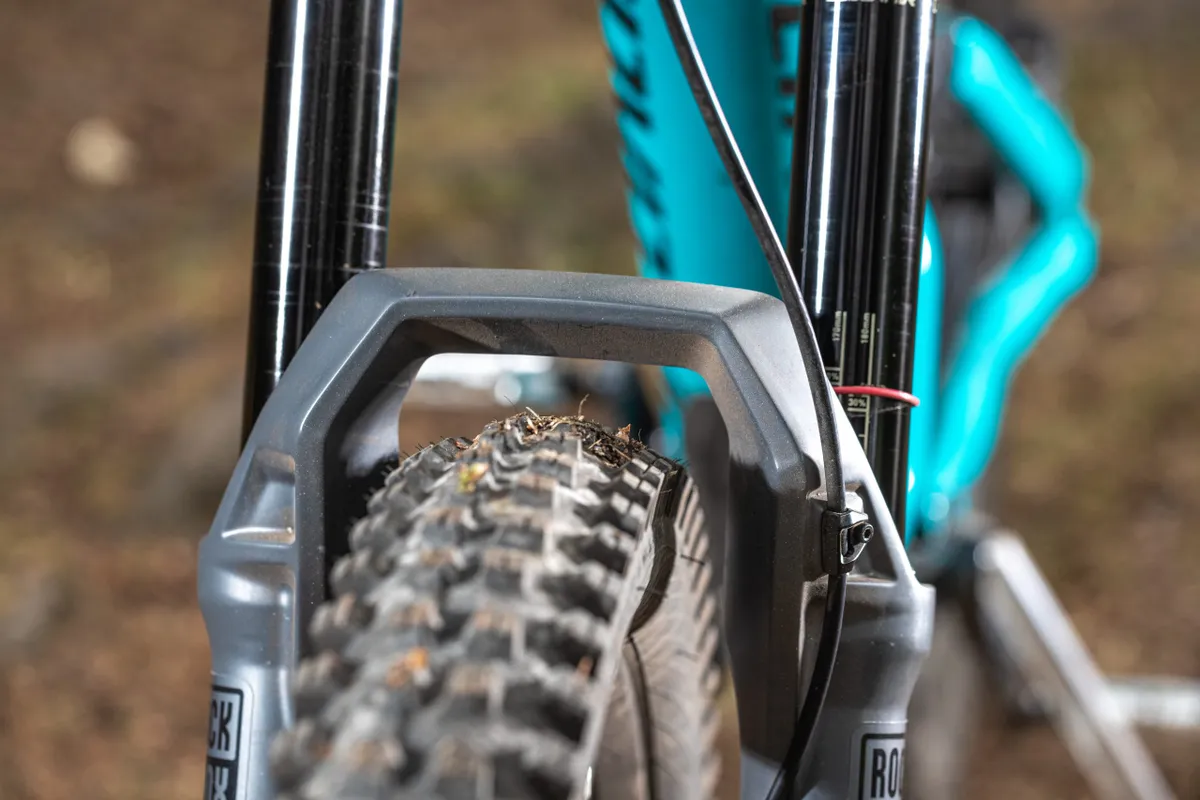
Still, RockShox claims the new ZEB manages to balance stiffness and comfort almost perfectly.
Torsionally, RockShox claims that the ZEB sees a massive 21 per cent jump when compared to the Lyrik (comparing 180mm, 29in models of each fork), while its side to side bending stiffness increases by 7 per cent.
Where some of the ZEB’s chassis comfort may come from is RockShox' decision to up its fore/aft stiffness by only 2 per cent over the Lyrik. In theory, that should all equate to a fork that can deliver plenty of steering accuracy and still offer a decent amount of comfort when pummelling through rocks.
Bigger equals better (sometimes)
Increasing the upper tube diameter can cause more friction due to the larger surface area, but RockShox says that by increasing bushing lengths and overlaps, the fork is less prone to binding under load and should slide more smoothly through its travel, negating any increase in seal friction due to the bigger 38mm tubes.
While the ZEB may have been treated to wider diameter stanchions than the Boxxer fork, it forgoes the 20mm axle. RockShox claims that a properly designed 15mm axle can be as stiff as, if not stiffer than, its 20mm equivalent.
As with all RockShox forks, the new ZEB is designed to work with the brand's oversized hub end-caps (Torque Caps), which are said to bolster front-end stiffness further.
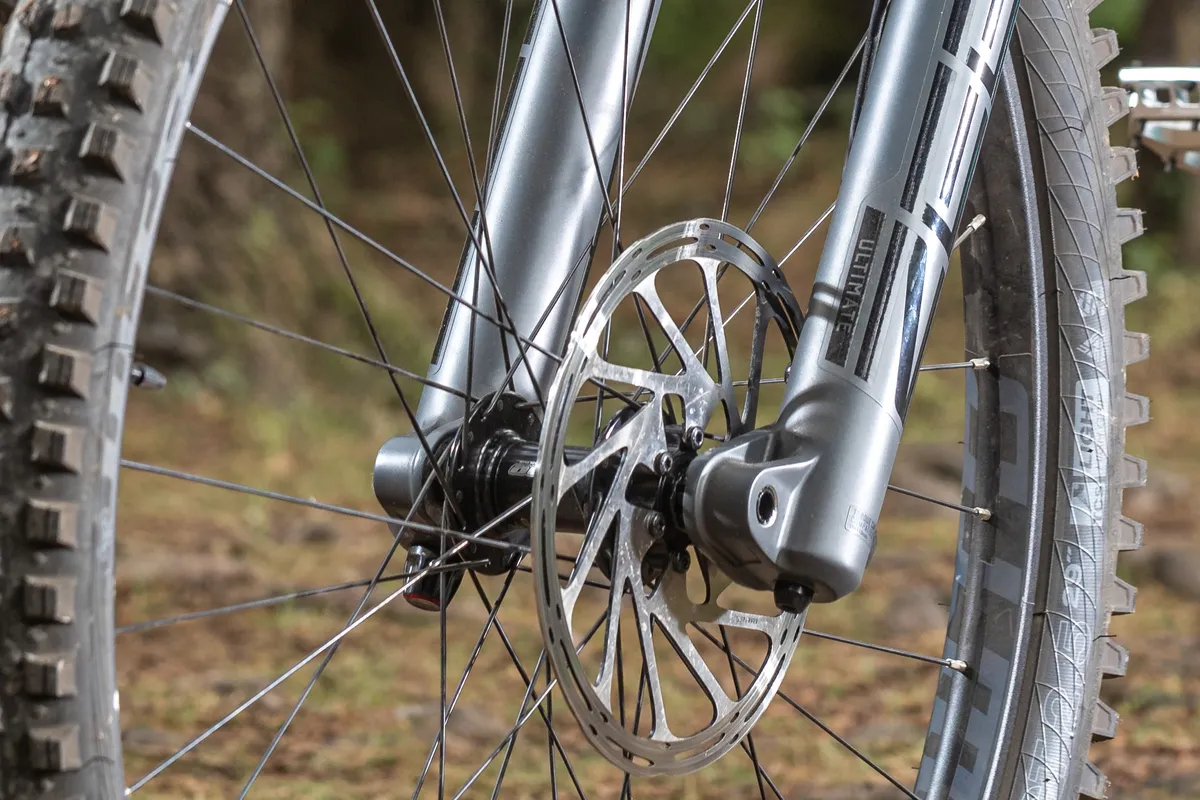
Now, back to that angular, highly-sculpted fork arch that joins the lower legs. If you look at this from the side profile, you’ll spot that it appears to be quite pronounced, sitting quite far forward.
This, according to RockShox, is for better mudguard and head tube clearance when bottomed out – a real consideration when you look at some of the more bulbous, over-sized head tube designs out there.
Like the SID, the ZEB’s arch features three small threads that allow you to bolt one of its direct-mount fenders in place.
And, tenuously carrying on from my previous mention of big head tubes, the ZEB will be available with different crown sizes.
While these may offer varying dimensions to better match a bike’s aesthetics, they don’t in fact alter the fork’s stiffness or ride characteristics, but simply help to create a smoother look up front, essentially getting rid of any kind of step from head tube to crown.
Just in case the ZEB’s intentions weren’t blatantly obvious, the post brake mount is designed for a 200mm rotor, the smallest rotor that’ll work with the ZEB. It’s possible to bolt the brake caliper straight onto the post mount without any spacers with a massive 200mm rotor.
Other things to note include a max tyre clearance of 2.8in in both 650b and 29in sizes, and the axle-to-crown measurement (when comparing the same travel forks) is 5mm longer than that of the Lyrik.
Of course, what fork story would be complete without talking about offset. The ZEB comes with two options for those who settle on the 650b model (38 and 44mm) and just the one in the 29in version (44mm).
Further updates to the 2021 DebonAir spring
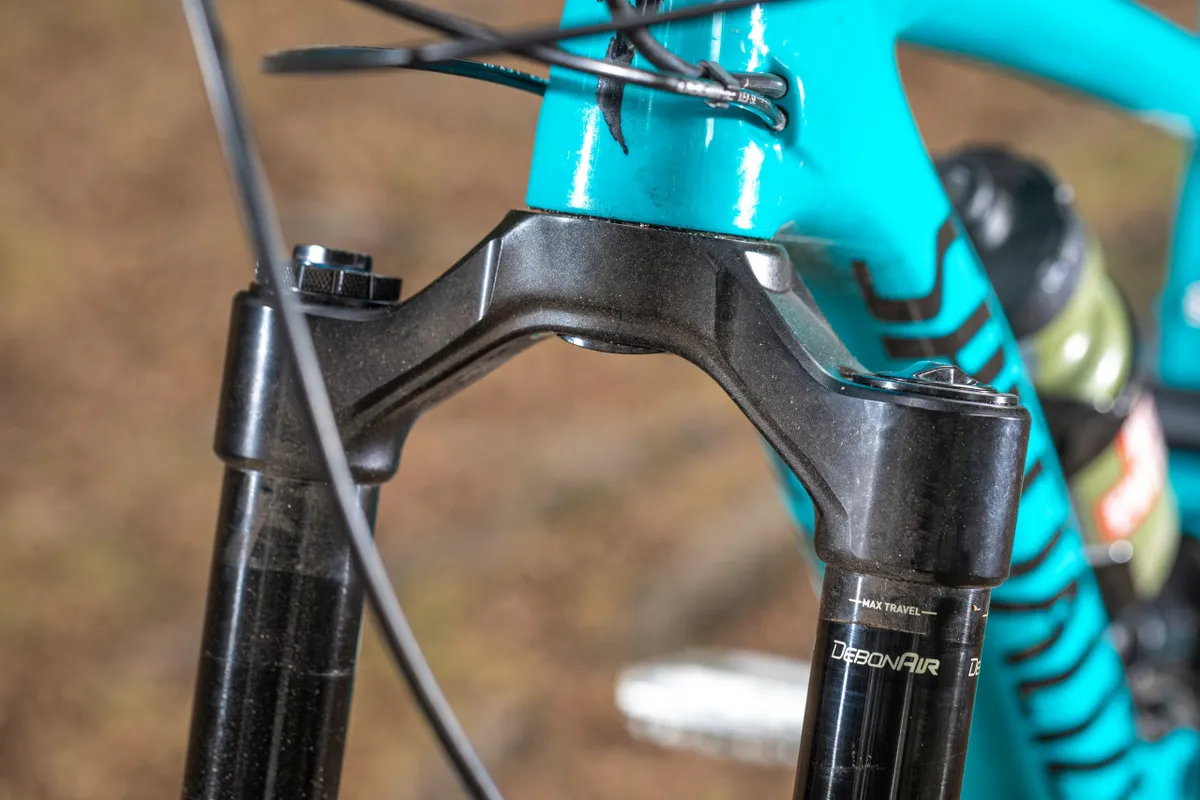
RockShox recently updated its DebonAir air springs in Lyrik and Pike forks for 2021, and while the ZEB’s spring works in much the same way (the positive and negative air chambers equalise when the fork is fully extended which results in the fork riding a little higher in its travel), they’re not the same, architecturally.
That’s largely down to the ZEB’s DebonAir spring being designed to fit inside a 38mm chassis, while the Lyrik’s is made for a 35mm chassis. As a result, you’ll not be able to retro fit a ZEB DebonAir spring into a Lyrik.
One significant difference between the two springs that RockShox was keen to point out is the new shape of the air piston and the top-out bumper, which is claimed to better control the fork as it fully extends or tops-out.
Compared to the Lyrik, the ZEB also has a larger overall air volume in the upper tubes, which results in less pressure being required when setting them up. RockShox provides a pressure chart on the side of the ZEB’s lower legs to help get you started with base settings.
The lower pressure required in the air spring also means that small pressure changes will have a more pronounced effect on feel. Just a few psi difference should, in theory, be noticeable on the trail.
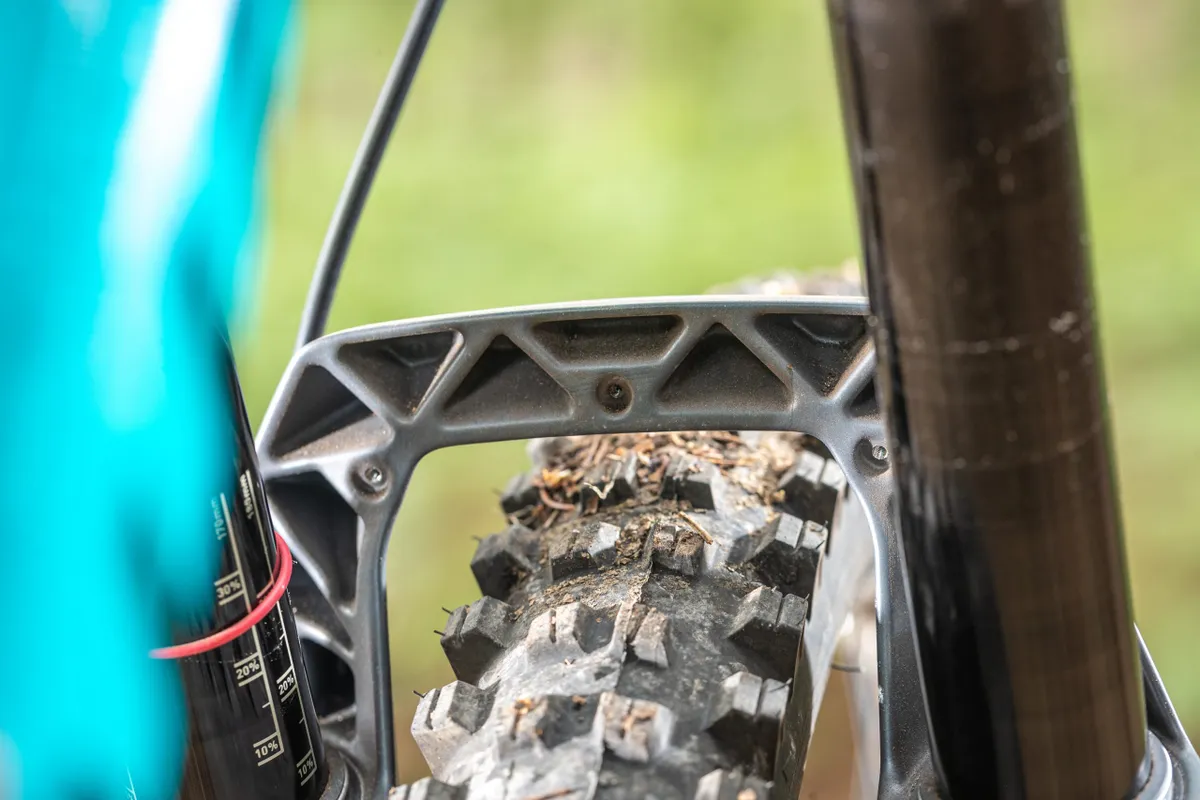
2021 RockShox ZEB brings back Dual Position Air spring
The other big news in the introduction of a Dual Position Air spring option – something RockShox has offered in the past but not in more recent years – which will be available on the base ZEB model (and uses the new Charger R damper), though could be retro-fitted to other ZEB forks if you so wished.
Thanks to this, riders will be able to quickly adjust between the two travel settings (e.g. you’ll be able to toggle a 180mm fork down to 150mm), which should improve climbing efficiency. This fork model will be aimed squarely at the electric mountain bike market.
Even with the Dual Position Air spring, you’ll still be able to adjust how progressive the ZEB’s air spring rate is using volume spacers, just as you can on all RockShox forks.
And, just like the current crop of 35mm forks, the new ZEB will continue to use the grey Bottomless Tokens which simply screw into the air top cap.
2021 RockShox ZEB Charger Damper changes
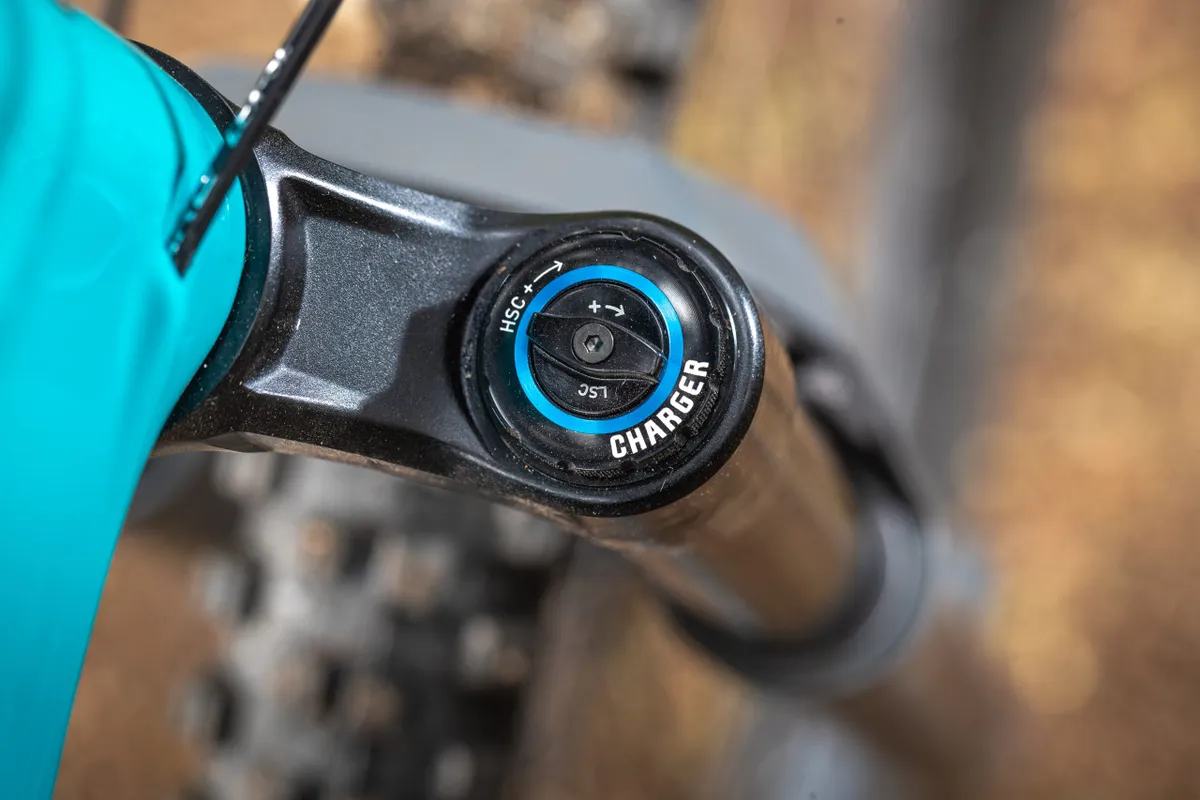
Much like the air spring, the damper characteristics in the new ZEB are essentially the same as they are in the Lyrik. However, because it needs to work inside the bigger 38mm tubes of the ZEB, it’s construction isn’t quite the same and therefore isn’t cross-compatible with the Lyrik and its 35mm chassis.
Both the ZEB Ultimate and the ZEB Select+, which isn’t available after-market, only on complete bikes, use the Charger 2.1 damper.
The Ultimate gets the fancier RC2 model, which has both high- and low-speed compression adjustment, as well as rebound adjustment, all of which are external.
However, RockShox is launching a new Charger R damper that will feature inside the cheaper ZEB base models.
This new damper is based on a version of its IFP-based (internal floating piston) Charger RC damper and comes with factory-set compression damping, so it can’t be externally adjusted – although rebound damping can still be tweaked by the rider.
Anything else you need to know?
The larger 38mm chassis, compared to the 35mm Lyrik, means an increase in oil volume in the lower legs to 20ml.
Just like many of RockShox' forks, the all-new ZEB forks use Maxima Plush damping fluid and low-friction SKF wiper seals in a bid to lower friction as much as possible and improve overall sensitivity.
Dual Position Air spring kits (allowing you to alter how much available travel your fork has) will be available to buy for £42 / $42 / €47, as well as the Charger 2.1 RC2 damper, should you wish to upgrade a lower-tier ZEB down the line. This will set you back £325 / $330 / €365.
2021 RockShox ZEB models and pricing
The new ZEB fork is available in five models, four of which can be bought as an aftermarket part and one will be sold on complete bikes only.
2021 RockShox ZEB Ultimate
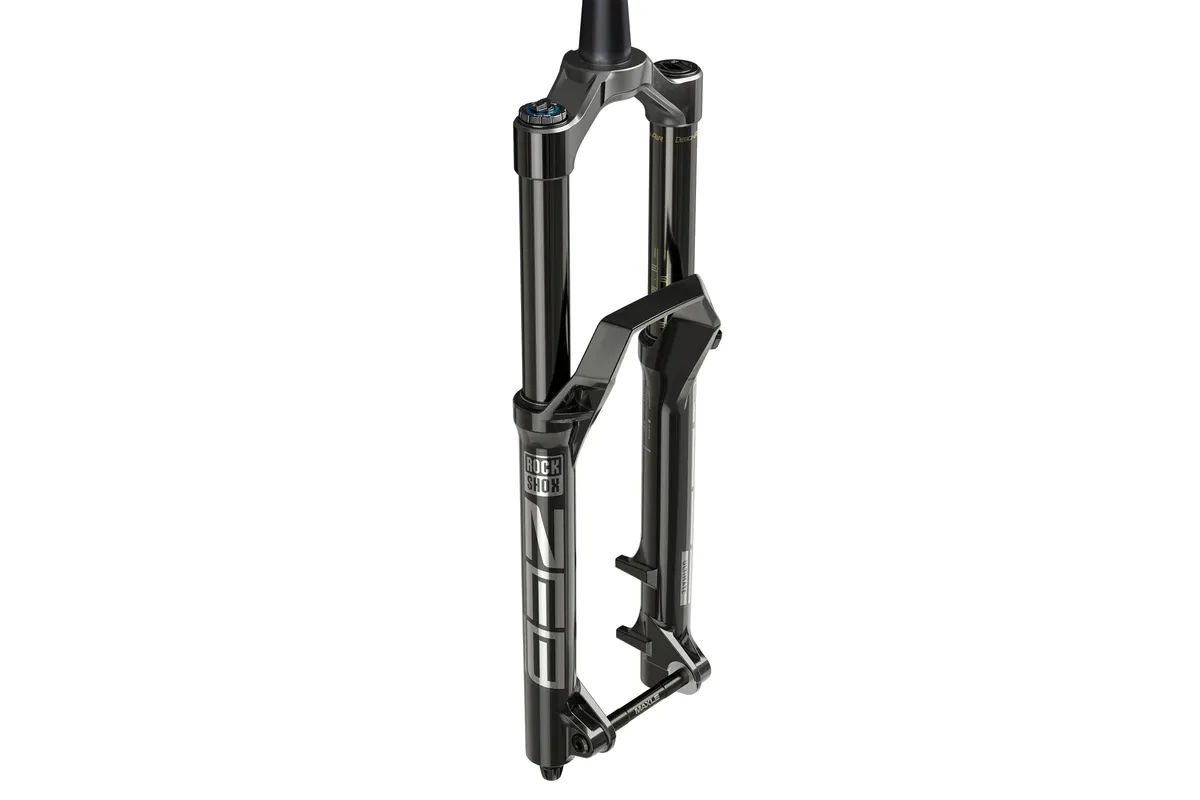
- Damper: Charger 2.1 RC2
- Travel: 160mm, 170mm, 180mm, 190mm
- Offset: 38mm (27.5in), 44mm (27.5in, 29in)
- Wheel sizes: 27.5in, 29in
- Weight (claimed): 2,281g (29in, 170mm, Maxle Stealth, uncut steerer)
- Price: £969 / $999 / €1,089
2021 RockShox ZEB Select+
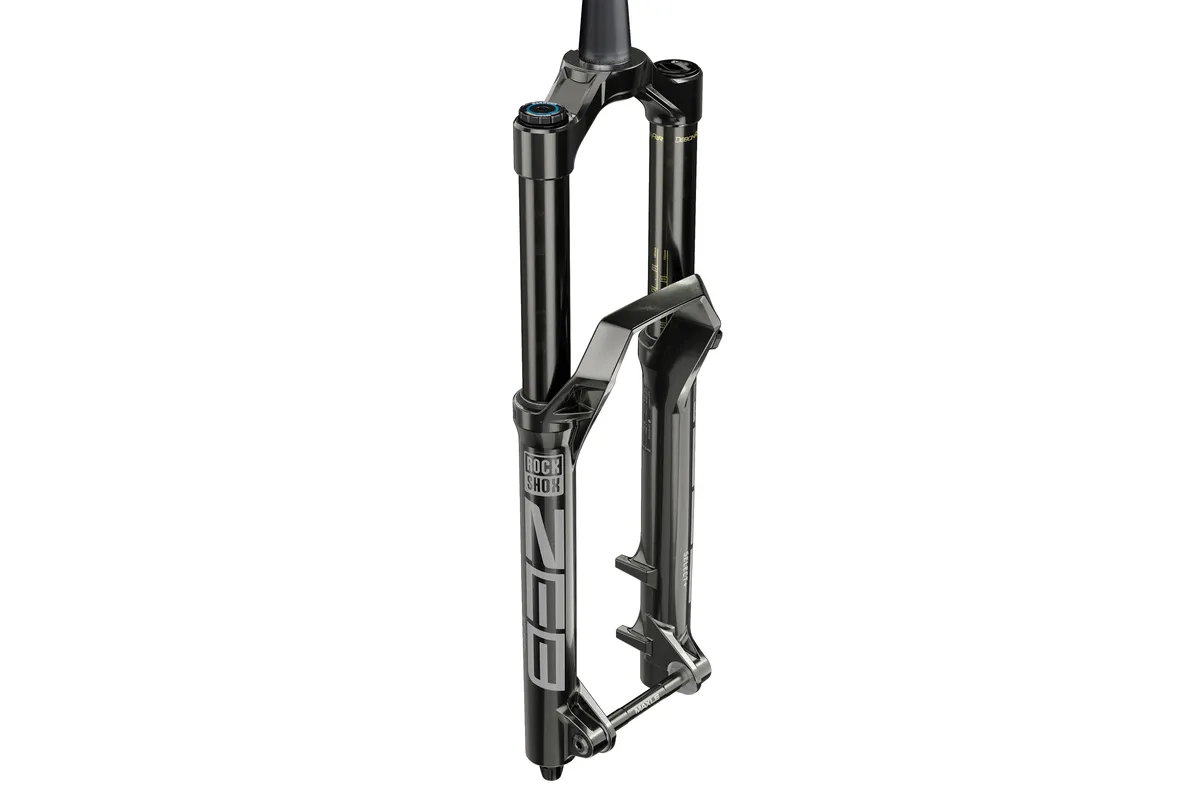
- Damper: Charger 2.1 RC2
- Travel: 160mm, 170mm, 180mm, 190mm
- Offset: 38mm (27.5in), 44mm (27.5in, 29in)
- Wheel sizes: 27.5in, 29in
- Weight (claimed): 2,281g (29in, 170mm, Maxle Stealth, uncut steerer)
- Price: Not available aftermarket
2021 RockShox ZEB Select
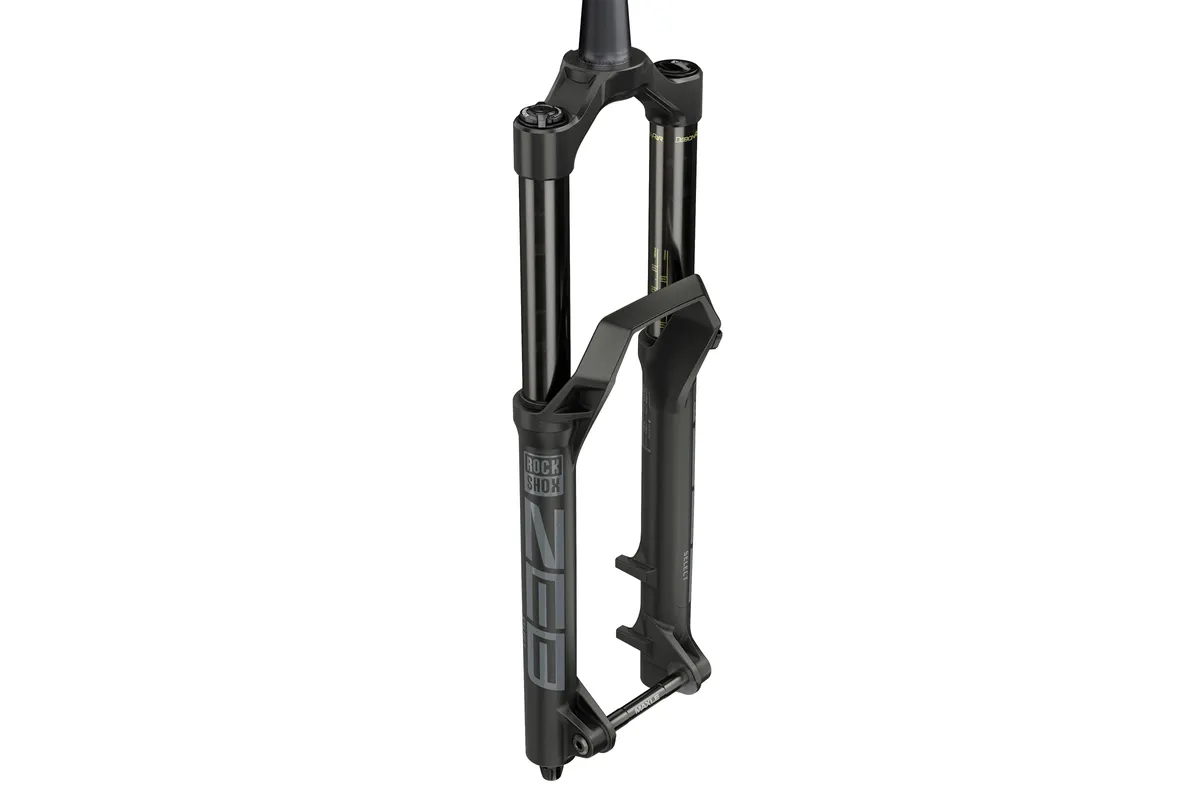
- Damper: Charger RC
- Travel: 160mm, 170mm, 180mm, 190mm
- Offset: 38mm (27.5in), 44mm (27.5in, 29in)
- Wheel sizes: 27.5in, 29in
- Weight (claimed): 2,270g (29in, 170mm, Maxle Stealth, uncut steerer)
- Price: £779 / $799 / €869
2021 RockShox ZEB (e-MTB)
- Damper: Charger R
- Travel: 150mm, 160mm, 170mm, 180mm
- Offset: 44mm (27.5in, 29in)
- Wheel sizes: 27.5in, 29in
- Weight (claimed): 2,279g (29in, 170mm, Maxle Ultimate, uncut steerer)
- Price: £679 / $699 / €759
2021 RockShox ZEB (e-MTB) Dual Position Air
- Damper: Charger R
- Travel: 150mm–180mm (30mm travel adjust)
- Offset: 44mm (27.5in, 29in)
- Wheel sizes: 27.5in, 29in
- Weight (claimed): TBC
- Price: £779 / $799 / €869
2021 RockShox ZEB fork weights
Stick both forks on the scales and interestingly the cheaper of the two weighs in a little bit lighter at 2,245g compared to the Fox 38 at 2,363g (both forks were 170mm travel 29in models).
Not that weight is the be-all and end-all, of course.
2021 RockShox ZEB Ultimate first ride impressions
I’m only a few rides into my time aboard the ZEB and, due to government-imposed restrictions, haven’t been able to head to my usual fork testing grounds in South Wales. As a result, I can only give you some brief ride impressions. A full review will follow soon though, so stay tuned.
Set up was quick and easy, with the pressure chart that RockShox provides on the side of the ZEB proving very accurate. While I left the high-speed compression adjuster fully open, I ended up 12 clicks out from fully closed on the low-speed compression adjuster.
I did manage a couple of back-to-back runs using the 2021 Lyrik on my first outing aboard the ZEB, which proved very interesting (and something I’ll be doing more of with Wales re-opening).
Hammering into a fast, loose turn riddled with pronounced roots that splay across the majority of the corner, the feel through the front of the bike is noticeably different with the ZEB in place.
While I had no problems tackling this turn with the Lyrik bolted in place (and never once felt like I was struggling with steering accuracy or flex through the fork), the ZEB does feel like it adds a bit more precision through the bars.
It’s supple too, and seems to track the terrain superbly, keeping the front tyre glued to the loose surface below.
On rides since, I’ve pummelled the ZEB into all manner of obstacles where it’s dealt with everything with masses of composure, all the while keeping me feeling comfortable and in control.
Weighing 68kg, it could be that I won’t feel all of the structural benefits of the bigger ZEB over the Lyrik. I will get heavier riders to try this and carry out some thorough back-to-back analysis before writing a full review, though.
